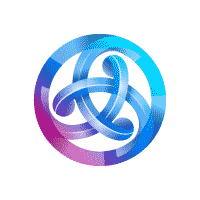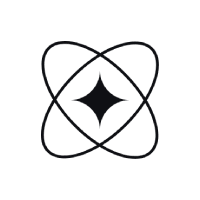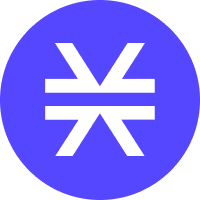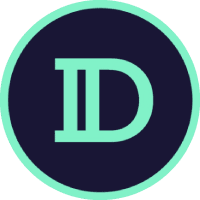Bitget:日次取引量の世界ランキングでトップ4にランクイン!
BTCマーケットシェア61.17%
Bitgetの新規上場 : Pi
BTC/USDT$104223.85 (+1.57%)恐怖・強欲指数70(強欲)
アルトコインシーズン指数:0(ビットコインシーズン)
ビットコイン現物ETFの純流入総額(+$5.2M(1日)、+$1.6B(7日))。6,200 USDT相当の新規ユーザー向けウェルカムギフトパッケージ。今すぐ獲得する
Bitgetアプリでいつでもどこでも取引しましょう今すぐダウンロードする
Bitget:日次取引量の世界ランキングでトップ4にランクイン!
BTCマーケットシェア61.17%
Bitgetの新規上場 : Pi
BTC/USDT$104223.85 (+1.57%)恐怖・強欲指数70(強欲)
アルトコインシーズン指数:0(ビットコインシーズン)
ビットコイン現物ETFの純流入総額(+$5.2M(1日)、+$1.6B(7日))。6,200 USDT相当の新規ユーザー向けウェルカムギフトパッケージ。今すぐ獲得する
Bitgetアプリでいつでもどこでも取引しましょう今すぐダウンロードする
Bitget:日次取引量の世界ランキングでトップ4にランクイン!
BTCマーケットシェア61.17%
Bitgetの新規上場 : Pi
BTC/USDT$104223.85 (+1.57%)恐怖・強欲指数70(強欲)
アルトコインシーズン指数:0(ビットコインシーズン)
ビットコイン現物ETFの純流入総額(+$5.2M(1日)、+$1.6B(7日))。6,200 USDT相当の新規ユーザー向けウェルカムギフトパッケージ。今すぐ獲得する
Bitgetアプリでいつでもどこでも取引しましょう今すぐダウンロードする



CRYPTO CLOUDの価格CLOUD
未上場
決済通貨:
JPY
データはサードパーティプロバイダーから入手したものです。このページと提供される情報は、特定の暗号資産を推奨するものではありません。上場されている通貨の取引をご希望ですか? こちらをクリック
¥0.2507+1.95%1D
価格チャート
CRYPTO CLOUDの価格チャート(CLOUD/JPY)
最終更新:2025-05-13 22:16:29(UTC+0)
時価総額:--
完全希薄化の時価総額:--
24時間取引量:¥284,509.71
24時間取引量 / 時価総額:0.00%
24時間高値:¥0.2535
24時間安値:¥0.2333
過去最高値:¥0.9697
過去最安値:¥0.006211
循環供給量:-- CLOUD
総供給量:
398,982,970CLOUD
流通率:0.00%
最大供給量:
--CLOUD
BTCでの価格:0.{7}1633 BTC
ETHでの価格:0.{6}6347 ETH
BTC時価総額での価格:
--
ETH時価総額での価格:
--
コントラクト:--
CRYPTO CLOUDに投票しましょう!
注:この情報はあくまでも参考情報です。
CRYPTO CLOUDのAI分析レポート
本日の暗号資産市場のハイライトレポートを見る
本日のCRYPTO CLOUDの現在価格(JPY)
現在、CRYPTO CLOUDの価格は¥0.2507 JPYで時価総額は¥0.00です。CRYPTO CLOUDの価格は過去24時間で1.95%上昇し、24時間の取引量は¥284,509.71です。CLOUD/JPY(CRYPTO CLOUDからJPY)の交換レートはリアルタイムで更新されます。
CRYPTO CLOUDの価格履歴(JPY)
CRYPTO CLOUDの価格は、この1年で+847.45%を記録しました。直近1年間のJPY建ての最高値は¥0.9697で、直近1年間のJPY建ての最安値は¥0.006211でした。
時間価格変動率(%) 最低価格
最低価格 最高価格
最高価格 
 最低価格
最低価格 最高価格
最高価格 
24h+1.95%¥0.2333¥0.2535
7d+40.50%¥0.1823¥0.2668
30d+10.29%¥0.1703¥0.2739
90d+87.86%¥0.04219¥0.3451
1y+847.45%¥0.006211¥0.9697
すべての期間+476.62%¥0.006211(2024-11-04, 191 日前 )¥0.9697(2024-12-26, 139 日前 )
CRYPTO CLOUDの最高価格はいくらですか?
CRYPTO CLOUDの過去最高値(ATH)は¥0.9697 JPYで、2024-12-26に記録されました。CRYPTO CLOUDのATHと比較すると、CRYPTO CLOUDの現在価格は74.14%下落しています。
CRYPTO CLOUDの最安価格はいくらですか?
CRYPTO CLOUDの過去最安値(ATL)は¥0.006211 JPYで、2024-11-04に記録されました。CRYPTO CLOUDのATLと比較すると、CRYPTO CLOUDの現在価格は3937.09%上昇しています。
CRYPTO CLOUDの価格予測
2026年のCLOUDの価格はどうなる?
CLOUDの過去の価格パフォーマンス予測モデルによると、CLOUDの価格は2026年に¥0.2446に達すると予測されます。
2031年のCLOUDの価格はどうなる?
2031年には、CLOUDの価格は+46.00%変動する見込みです。 2031年末には、CLOUDの価格は¥0.4911に達し、累積ROIは+106.49%になると予測されます。
よくあるご質問
CRYPTO CLOUDの現在の価格はいくらですか?
CRYPTO CLOUDのライブ価格は¥0.25(CLOUD/JPY)で、現在の時価総額は¥0 JPYです。CRYPTO CLOUDの価値は、暗号資産市場の24時間365日休みない動きにより、頻繁に変動します。CRYPTO CLOUDのリアルタイムでの現在価格とその履歴データは、Bitgetで閲覧可能です。
CRYPTO CLOUDの24時間取引量は?
過去24時間で、CRYPTO CLOUDの取引量は¥284,509.71です。
CRYPTO CLOUDの過去最高値はいくらですか?
CRYPTO CLOUD の過去最高値は¥0.9697です。この過去最高値は、CRYPTO CLOUDがローンチされて以来の最高値です。
BitgetでCRYPTO CLOUDを購入できますか?
はい、CRYPTO CLOUDは現在、Bitgetの取引所で利用できます。より詳細な手順については、お役立ちの購入方法 ガイドをご覧ください。
CRYPTO CLOUDに投資して安定した収入を得ることはできますか?
もちろん、Bitgetは戦略的取引プラットフォームを提供し、インテリジェントな取引Botで取引を自動化し、利益を得ることができます。
CRYPTO CLOUDを最も安く購入できるのはどこですか?
戦略的取引プラットフォームがBitget取引所でご利用いただけるようになりました。Bitgetは、トレーダーが確実に利益を得られるよう、業界トップクラスの取引手数料と流動性を提供しています。
CRYPTO CLOUDの集中度別保有量
大口
投資家
リテール
CRYPTO CLOUDの保有時間別アドレス
長期保有者
クルーザー
トレーダー
coinInfo.name(12)のリアル価格チャート

CRYPTO CLOUDのグローバル価格
現在、CRYPTO CLOUDは他の通貨の価値でいくらですか?最終更新:2025-05-13 22:16:29(UTC+0)
CLOUD から MXN
Mexican Peso
Mex$0.03CLOUD から GTQGuatemalan Quetzal
Q0.01CLOUD から CLPChilean Peso
CLP$1.6CLOUD から HNLHonduran Lempira
L0.04CLOUD から UGXUgandan Shilling
Sh6.21CLOUD から ZARSouth African Rand
R0.03CLOUD から TNDTunisian Dinar
د.ت0.01CLOUD から IQDIraqi Dinar
ع.د2.23CLOUD から TWDNew Taiwan Dollar
NT$0.05CLOUD から RSDSerbian Dinar
дин.0.18CLOUD から DOPDominican Peso
RD$0.1CLOUD から MYRMalaysian Ringgit
RM0.01CLOUD から GELGeorgian Lari
₾0CLOUD から UYUUruguayan Peso
$0.07CLOUD から MADMoroccan Dirham
د.م.0.02CLOUD から AZNAzerbaijani Manat
₼0CLOUD から OMROmani Rial
ر.ع.0CLOUD から SEKSwedish Krona
kr0.02CLOUD から KESKenyan Shilling
Sh0.22CLOUD から UAHUkrainian Hryvnia
₴0.07- 1
- 2
- 3
- 4
- 5
もっと購入する
暗号資産はどこで購入できますか?
動画セクション - 素早く認証を終えて、素早く取引へ

Bitgetで本人確認(KYC認証)を完了し、詐欺から身を守る方法
1. Bitgetアカウントにログインします。
2. Bitgetにまだアカウントをお持ちでない方は、アカウント作成方法のチュートリアルをご覧ください。
3. プロフィールアイコンにカーソルを合わせ、「未認証」をクリックし、「認証する」をクリックしてください。
4. 発行国または地域と身分証の種類を選択し、指示に従ってください。
5. 「モバイル認証」または「PC」をご希望に応じて選択してください。
6. 個人情報を入力し、身分証明書のコピーを提出し、自撮りで撮影してください。
7. 申請書を提出すれば、本人確認(KYC認証)は完了です。
Bitgetを介してオンラインでCRYPTO CLOUDを購入することを含む暗号資産投資は、市場リスクを伴います。Bitgetでは、簡単で便利な購入方法を提供しており、取引所で提供している各暗号資産について、ユーザーに十分な情報を提供するよう努力しています。ただし、CRYPTO CLOUDの購入によって生じる結果については、当社は責任を負いかねます。このページおよび含まれる情報は、特定の暗号資産を推奨するものではありません。
[Deprecated] ICP EcosystemInternet Computer エコシステム
CRYPTO CLOUDの評価
コミュニティからの平均評価
4.6
このコンテンツは情報提供のみを目的としたものです。
Bitgetインサイト
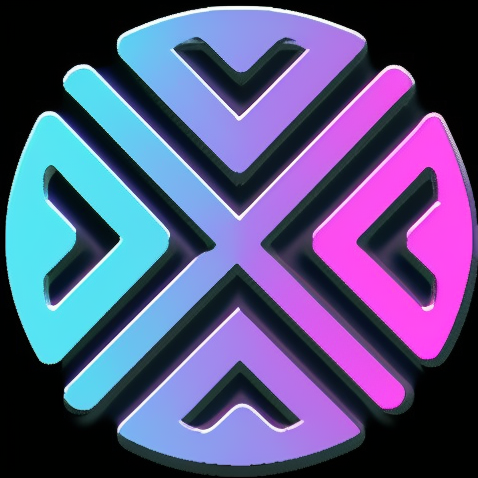
CryptoOnline
2時
Ethiopia has emerged as a key player in #Bitcoin mining, becoming the first African country to support large-scale government-backed mining. By 2024, Ethiopia achieved 2.5% of the global $BTC hashrate, thanks to its abundant hydroelectric power from the Grand Ethiopian Renaissance Dam. The government signed agreements with 21 mining companies, including UMINERS, to further the country’s economic growth and attract foreign investment. Despite crypto trading still being illegal in Ethiopia, the government aims to build a USD surplus through mining operations. UMINERS plans to expand locally by hiring and training workers, partnering with universities to offer courses. To support smaller businesses, UMINERS launched a Bitcoin-collateralized loan program. The company also plans to introduce cloud mining services for both institutional and individual clients. UMINERS envisions a future where large governments and corporations dominate the mining space, with the company offering a full turnkey mining solution.
CLOUD+2.47%
BTC+1.32%

Slimking
4時
Navigating the Vibrant $SHM Ecosystem in 2025
The Structural Health Monitoring ($SHM) ecosystem in 2025 is a dynamic and rapidly evolving landscape, driven by advancements in sensor technology, data analytics, and the increasing demand for safer and more efficient infrastructure management. Today, $SHM is no longer a niche field but a crucial component of modern engineering and maintenance practices across various sectors.
At its core, the $SHM ecosystem revolves around the integration of sensors into structures – bridges, buildings, aircraft, pipelines, wind turbines, and more – to continuously monitor their condition. These sensors, ranging from traditional strain gauges and accelerometers to cutting-edge fiber optic sensors and wireless sensor networks, collect real-time data on parameters such as stress, strain, vibration, temperature, and corrosion.
A significant aspect of the $SHM ecosystem today is the sophisticated data acquisition and processing systems. The sheer volume of data generated by these sensor networks necessitates robust and efficient methods for collection, storage, and pre-processing. Cloud-based platforms are increasingly popular, offering scalability and accessibility for managing vast datasets. Edge computing also plays a vital role, enabling real-time analysis and decision-making at the source, reducing latency and bandwidth requirements.
The true power of the $SHM ecosystem lies in the advanced analytics and interpretation of the collected data. Machine learning (ML) and artificial intelligence (AI) algorithms are now integral to identifying patterns, detecting anomalies, predicting potential failures, and assessing the remaining useful life of structures. These techniques allow for a shift from reactive maintenance to proactive and predictive maintenance strategies, leading to significant cost savings, reduced downtime, and enhanced safety. For instance, AI algorithms can analyze vibration data from a bridge to identify subtle changes that might indicate structural damage long before it becomes visible to the naked eye.
The $SHM ecosystem is also characterized by a growing number of specialized companies and research institutions developing innovative hardware, software, and services. Sensor manufacturers are focusing on creating more durable, cost-effective, and energy-efficient devices. Software developers are creating user-friendly platforms for data visualization, analysis, and reporting. Service providers offer expertise in sensor installation, data interpretation, and the implementation of $SHM strategies tailored to specific infrastructure needs.
Furthermore, the standardization and interoperability of $SHM systems are gaining traction. Efforts are underway to establish common protocols and data formats to facilitate seamless integration between different hardware and software components. This will foster greater collaboration and data sharing within the ecosystem, leading to more comprehensive and insightful structural health assessments.
The adoption of $SHM is being driven by several key factors. Aging infrastructure worldwide necessitates effective monitoring and maintenance strategies to ensure safety and prevent catastrophic failures. Increasing regulatory requirements for structural integrity and environmental sustainability are also pushing industries to embrace $SHM solutions. Moreover, the economic benefits of predictive maintenance, such as reduced repair costs and extended asset lifespan, are becoming increasingly apparent.
Looking ahead, the $SHM ecosystem is poised for further growth and innovation. We can expect to see even more sophisticated sensor technologies, including self-powered and autonomous sensors. The integration of digital twins – virtual representations of physical assets – with $SHM data will provide even more comprehensive insights into structural behavior. Furthermore, the use of drones and robotics for automated inspections and sensor deployment will become more prevalent, especially for large and complex structures.
In conclusion, the $SHM ecosystem in 2025 is a vibrant and crucial field that is revolutionizing how we manage and maintain our infrastructure. The convergence of advanced sensor technologies, powerful data analytics, and increasing demand for safety and efficiency is driving significant advancements and adoption of $SHM solutions across various industries. As technology continues to evolve, $SHM will undoubtedly play an even more critical role in ensuring the longevity, safety, and sustainability of our built environment.
CLOUD+2.47%
CORE-0.01%

cruze70
4時
How Could $RDAC Support a Decentralized Verification Network for Digital Collectibles and Limited-Ed
The rise of digital collectibles, NFTs, and exclusive limited-edition goods has introduced new challenges in verifying authenticity, ownership, and provenance. Traditional centralized methods of certification are often opaque, vulnerable to fraud, and limited in accessibility. Blockchain-based solutions offer decentralized, transparent alternatives — and $RDAC presents itself as a promising infrastructure to support such a network.
Potential Role of $RDAC:
$RDAC, as a decentralized cloud and blockchain-based token, can underpin a decentralized verification network by providing an immutable, trustless system for authenticating digital and physical assets. Each collectible item could be registered on the $RDAC blockchain with a unique token representing its verified status, ownership record, and transaction history.
Key Benefits:
Decentralized Verification: Eliminates the need for centralized authorities or intermediaries in confirming asset authenticity.
Transparent Ownership Records: Maintains a publicly accessible, tamper-resistant ledger of asset history, reducing fraud and counterfeit risks.
Smart Contract Automation: Enables automated processes for ownership transfers, royalty payments, and proof-of-authenticity issuance.
Interoperability: The $RDAC network could be integrated with NFT marketplaces, e-commerce platforms, auction houses, and brand registries for seamless asset verification.
Challenges and Considerations:
Scalability & Performance: The network must be capable of handling high transaction volumes, especially during peak activity periods.
User and Brand Adoption: Attracting artists, brands, collectors, and marketplaces to use the $RDAC verification network is essential for widespread impact.
Connecting Physical Goods to Digital Records: Developing reliable methods (e.g., NFC chips, QR codes, digital twins) to link physical items with their on-chain records.
Legal and Regulatory Compliance: Addressing jurisdictional issues surrounding digital asset ownership, data privacy, and product certification.
Conclusion:
$RDAC holds strong potential as the backbone for a decentralized verification network aimed at authenticating digital collectibles and limited-edition goods. By leveraging blockchain’s transparency, security, and decentralization, it could revolutionize how authenticity is managed in both digital and physical markets. The success of such an initiative would hinge on achieving scalability, driving ecosystem adoption, and navigating regulatory landscapes effectively.
LINK+4.90%
CLOUD+2.47%

cruze70
5時
Can $RDAC Fuel a Decentralized Proof-of-Authenticity Network for Digital Collectibles and Limited-Ed
Overview:
The growing market for digital collectibles and limited-edition physical products has highlighted the need for secure, verifiable systems to prove authenticity and ownership. Blockchain technology offers decentralized, transparent solutions to this problem, and $RDAC presents itself as a potential player in this space.
Use Case Potential:
$RDAC, as a decentralized cloud-based token, could be effectively utilized to build a proof-of-authenticity network by leveraging blockchain’s immutable ledger and smart contract capabilities. Each digital collectible or limited-edition item could be assigned a unique, tokenized proof of origin and transaction history, reducing the risk of fraud and counterfeit goods in secondary markets.
Key Advantages:
Decentralization: Removes reliance on centralized authorities for authentication.
Transparency: All transactions and authenticity records are stored on a public, tamper-resistant ledger.
Interoperability: Potential integration with NFT marketplaces, e-commerce platforms, and physical product registries.
Smart Contracts: Automated verification and transfer of ownership without intermediaries.
Challenges to Address:
Scalability: Managing a high volume of transactions without compromising speed or cost efficiency.
User Adoption: Gaining trust and onboarding brands, creators, and collectors into the $RDAC ecosystem.
Regulatory Considerations: Navigating legal frameworks around digital asset ownership and product authenticity.
Conclusion:
$RDAC holds promising potential as a foundation for a decentralized proof-of-authenticity network. Its ability to secure, verify, and track the provenance of digital collectibles and limited-edition items could position it as a valuable asset in combating counterfeiting and enhancing consumer trust. However, the success of such an initiative would depend on overcoming technical, adoption, and regulatory hurdles.
CLOUD+2.47%
RDAC+954.84%

Bpay-News
5時
Barcelona Welcomes CoreWeave's AI Cloud Platform with New Data Center Launch
Barcelona inaugurates a new data center hosting CoreWeave's AI platform, aiming to transform the city into a digital hub with sustainable and efficient infrastructure.
S+2.27%
CLOUD+2.47%
関連資産
最近追加された暗号資産
最も最近追加された暗号資産
同等の時価総額
すべてのBitget資産の中で、時価総額がCRYPTO CLOUDに最も近いのはこれらの8資産です。
CRYPTO CLOUDの追加情報



